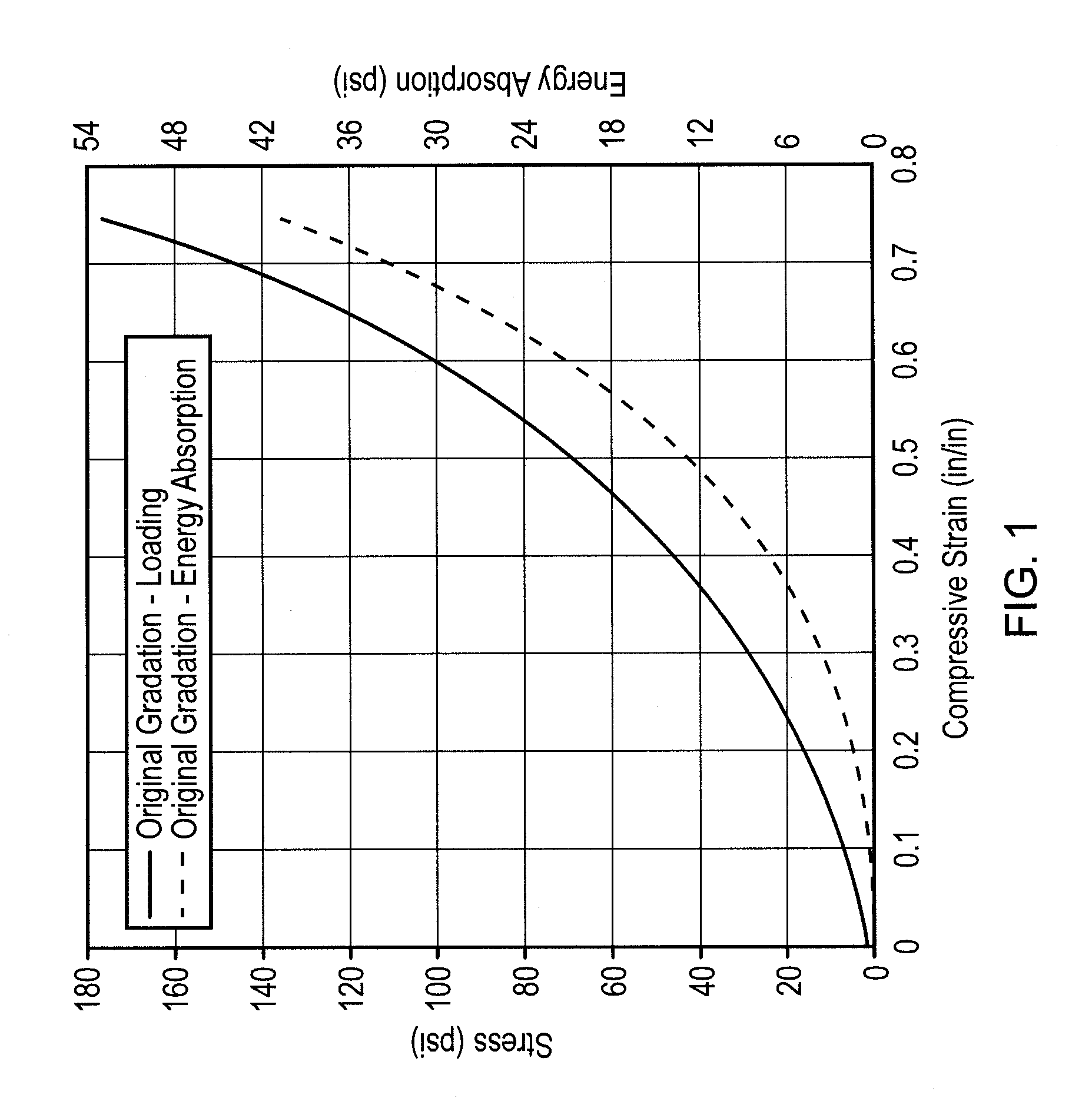Vehicle arresting bed
a technology of vehicle and seat, which is applied in the direction of shock absorbers, elastic dampers, ways, etc., can solve the problems of aircraft wheels causing a burst of particulate material, and affecting the safety of passengers
- Summary
- Abstract
- Description
- Claims
- Application Information
AI Technical Summary
Benefits of technology
Problems solved by technology
Method used
Image
Examples
first example embodiment
[0053]A first example embodiment of the vehicle arresting system is formed into the ground, and is schematically shown from the side in FIG. 2. The longitudinal vertical cross section of the bed is given the shape of a trapezoid of altitude B and length A which is laid down into the ground 2 such that the upper surface 4 of the arresting zone is aligned with and at the same level as the plane formed by the surrounding ground 2. By use of a design with a vertical trapezoidal cross section of the bed, it is obtained that both ends of the bed is provided with smooth transition zones 3. The angle α of the inclination may typically be in the range from 20 to 30°. The bottom 2 of the bed may be provided with drainage means (not shown) for avoiding standing water in the bed.
[0054]The bed is filled with foamed glass aggregate 1. The maximum depth of the foamed glass aggregate in this embodiment is the altitude B of the trapezoid, and the length of the arresting zone is the length A of the u...
second example embodiment
[0059]The second example embodiment is made along the same principle solution as the first example embodiment, in that the arrestor is made of the same foamed glass aggregate with similar nominal void fraction and particle size distribution as given for the first example embodiment, and is given approximately the same length A and depth B of the bed. The example embodiment is shown from the side in FIG. 3. Please note that the length of the bed is truncated in the figure.
[0060]The main difference is that the bed 1 of foamed glass aggregate in the second example embodiment is laid directly on the ground 2 without forming a pit / depression, see FIG. 3. In this case the bed of foamed glass needs to be contained by use of a mechanical structure 6 along the periphery of the bed. The mechanical structure should advantageously be designed to function as a ramp for both entering and exiting the aggregate bed 1. This may be obtained by forming the mechanical structure 6 with a triangular cros...
PUM
| Property | Measurement | Unit |
|---|---|---|
| particle sizes | aaaaa | aaaaa |
| length | aaaaa | aaaaa |
| length | aaaaa | aaaaa |
Abstract
Description
Claims
Application Information
 Login to View More
Login to View More - R&D
- Intellectual Property
- Life Sciences
- Materials
- Tech Scout
- Unparalleled Data Quality
- Higher Quality Content
- 60% Fewer Hallucinations
Browse by: Latest US Patents, China's latest patents, Technical Efficacy Thesaurus, Application Domain, Technology Topic, Popular Technical Reports.
© 2025 PatSnap. All rights reserved.Legal|Privacy policy|Modern Slavery Act Transparency Statement|Sitemap|About US| Contact US: help@patsnap.com



